
- HOME
- ABOUT US
- PRODUCTS
- SERVICE
- APPLICATIONS
- NEWS
- ABOUT US 2
- PRODUCTS1


SERVICE

当前位置:
Toothed crown restoration
发布时间: 2019-09-27 10:11
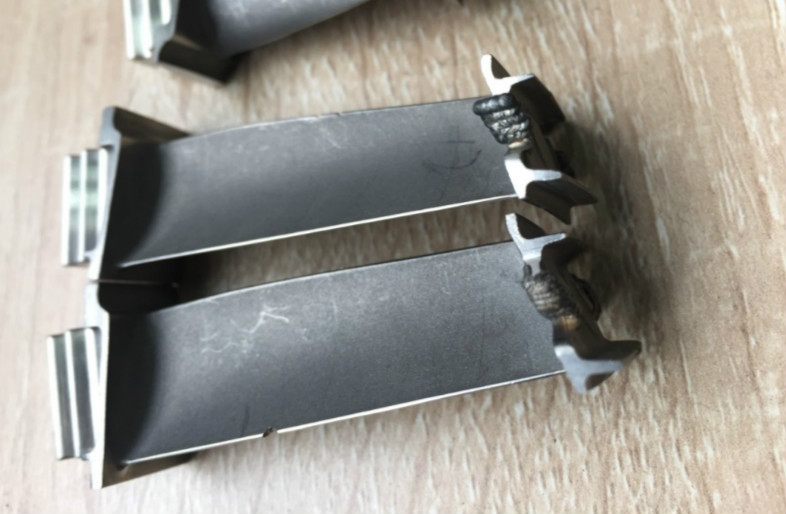



In order to increase the service life of the toothed blade turbine blade, the contact surface is strengthened by surface treatment and surfacing welding is used to increase the wear resistance layer. Compared with conventional surfacing methods such as argon arc welding, laser cladding technology has the advantages of concentrated energy density, small heat affected zone, small deformation, precise controllability, and easy automation. Therefore, laser cladding can be used as a new type of turbine blade toothed crown First choice for surface hardening and repair of failed blades. According to the working conditions of the material, two wear-resistant alloys, Co-Cr-W and Co-Cr-Mo, are generally selected as the material of the surfacing layer. This technology has mature applications abroad, and there are not many practical applications in China. The Huirui technical team has carried out process research on this technology many years ago and has successfully developed a laser cladding process for a certain type of blade. Independent research and development of aero engine laser cladding additive manufacturing equipment with independent intellectual property rights.
It adopts special wear-resistant and improved powder with optimized proportion according to the process, which has good high-temperature wear resistance and good weldability. After cladding, the appearance is flat and the amount of modification is small; there is no obvious deformation after cladding; no macro-cracks are detected by fluorescence detection; there are no appearance defects such as slump and incomplete cladding. The metallographic detection has good metallurgical bonding between the cladding layers, no porosity, no unfusion, no obvious cracks, etc. Under the same corrosion conditions, the corrosion resistance of the cladding layers is much higher than that of the substrate. Microhardness test results The hardness value of the cladding layer has far met the customer's hardness requirements, with an average hardness> 550HV (HRC53). The wear resistance and corrosion resistance of the cladding layer meet the requirements of the surface strengthening layer.
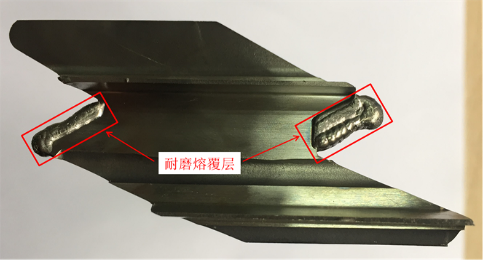
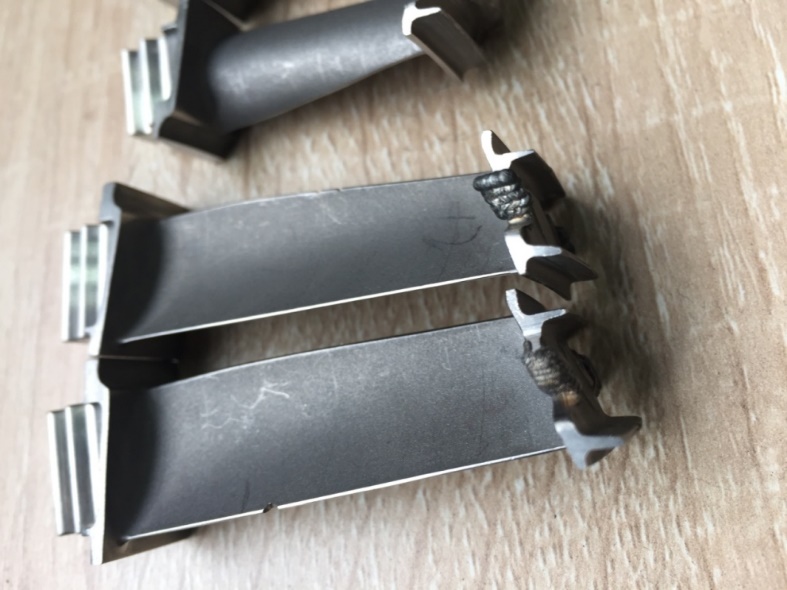
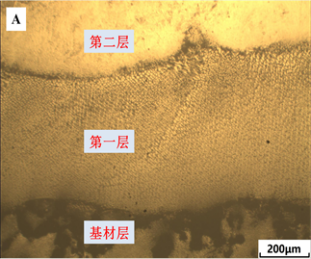
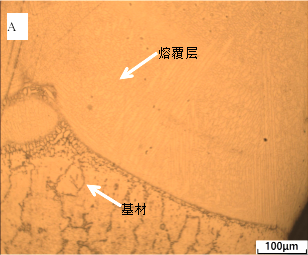
To provide customers with toothed crown repair requirements, cobalt-chromium-tungsten alloy powder cladding is used. After cladding, there is no obvious deformation of the blade; no macro-cracks; no appearance defects such as melting collapse, fullness, etc., the appearance is flat, and the amount of modification is small. It can be seen from the metallographic diagram that the bonding boundary of the blade substrate and the cladding layer is obvious, and the structure of the fusion zone is clear and dense; the crystal boundaries are clear, the crystal shape is needle-like and dendritic, the grain size is uniform, and no pores, cracks, Obvious defects such as non-fusion. The hardness of the cladding layer is between 40 ~ 50HRC, which meets the hardness index required by customers.
It adopts special wear-resistant and improved powder with optimized proportion according to the process, which has good high-temperature wear resistance and good weldability. After cladding, the appearance is flat and the amount of modification is small; there is no obvious deformation after cladding; no macro-cracks are detected by fluorescence detection; there are no appearance defects such as slump and incomplete cladding. The metallographic detection has good metallurgical bonding between the cladding layers, no porosity, no unfusion, no obvious cracks, etc. Under the same corrosion conditions, the corrosion resistance of the cladding layers is much higher than that of the substrate. Microhardness test results The hardness value of the cladding layer has far met the customer's hardness requirements, with an average hardness> 550HV (HRC53). The wear resistance and corrosion resistance of the cladding layer meet the requirements of the surface strengthening layer.


Appearance of a certain type of turbine blade tooth crown after cladding


Metallographic diagram of a certain type of low-pressure turbine blade after cladding
To provide customers with toothed crown repair requirements, cobalt-chromium-tungsten alloy powder cladding is used. After cladding, there is no obvious deformation of the blade; no macro-cracks; no appearance defects such as melting collapse, fullness, etc., the appearance is flat, and the amount of modification is small. It can be seen from the metallographic diagram that the bonding boundary of the blade substrate and the cladding layer is obvious, and the structure of the fusion zone is clear and dense; the crystal boundaries are clear, the crystal shape is needle-like and dendritic, the grain size is uniform, and no pores, cracks, Obvious defects such as non-fusion. The hardness of the cladding layer is between 40 ~ 50HRC, which meets the hardness index required by customers.

CONTACT US

HOTLINE
025-86756109

Follow us on Wechat





E-Mail:info@huirui-tech.com

Address:No1 Ruixin Road, Jiangning District, Nanjing, JiangSu, China
地址:南京市江宁区瑞鑫路1号
NANJING HUIRUI PHOTOELECTRIC TECHNOLOGY CO., LTD.
Driving freedom of manufactUring
COPYRIGHT © XX import and Export Trading Co., Ltd. copyright all Guangdong 苏ICP备17032011号
Landline:+86-25-86756108



